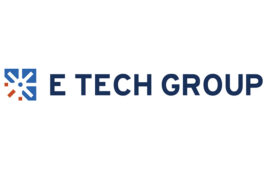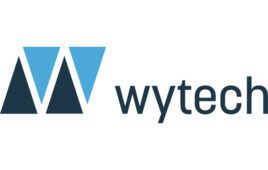By developing a strategic patent portfolio quickly and successfully, medtech companies can navigate a path to commercial success. This article focuses on savvy strategies that can lead to a quicker and stronger medtech patent issuance.
David J. Dykeman, Greenberg Traurig

[Image from Unsplash]
Below are six tips that companies should consider to quickly secure strong medtech patents for their innovations:
1. File provisional patent applications early and often.
Filing provisional applications, which provide one year of protection, can be both a time-saving and cost-saving measure. Using this strategy, medtech companies can defer larger filing costs for up to one year and file follow-on provisionals to cover incremental improvements as the invention develops.
2. Consider the USPTO’s fast-track programs.
Medtech companies should consider utilizing the United States Patent and Trademark Office’s (USPTO) fast-track programs – Track 1 and Accelerated Examination. These programs offer medtech companies a way to beat the wait time at the patent office and get patents issued faster.
The USPTO currently has a backlog of about 540,000 patent applications, which has created a logjam for the patent review and allowance process. It currently takes an average of at least two years for a utility application to obtain its final disposition (36 months for applications with a request for continued examination). In contrast, the USPTO Track 1 program strives to achieve a final disposition of utility patent applications within 12 months of filing. As of September 2018, the average pendency of a Track 1 patent application was only about 6.4 months.
Another USPTO fast-track program is an age-based program which speeds up examination for inventors aged 65 or older by filing a simple petition with the USPTO. Fast-track programs are also available in other key geographies, such as the Pace Program in the European Patent Office.
The USPTO fast-track programs may require additional filing fees and accelerate costs that would normally be spread over a period of years. However, medtech companies can still utilize these programs for their key patent applications to quickly obtain issued patent claims covering the most important features of the product. Additional patent applications with claims of different scope can then be filed via regular examination to form a “picket fence” of patent protection around the core aspects of the technology.
3. Get on the patent prosecution highway.
Another way to accelerate USPTO examination involves the Patent Prosecution Highway (PPH) program based on an issued foreign patent or a favorable search report. Under bilateral agreements between the USPTO and various foreign patent offices, an applicant receiving a favorable ruling from a first patent office may request that a second patent office fast track the examination of a corresponding application pending in the second office. Therefore, a potential strategy is to obtain allowable claims in the USPTO under the Track 1 procedure quickly, and then use the PPH to fast track examination in other countries. This combined strategy could allow applicants to obtain patents in both the USPTO and eligible foreign patent offices faster and more efficiently. Consequently, the PPH may help an applicant save time and reduce costs.
4. Utilize examiner interviews.
Patent examiner interviews can be an effective tool in advancing the prosecution of the patent application. In recent years, the USPTO has made a concerted effort to reduce its patent examination backlog and accelerate the patent prosecution process. To help accomplish this, the patent office suggests that patent examiners get directly involved with applicants as early as possible. Early and ongoing communication between a patent attorney and the examiner can help to improve the quality and speed of patent examination.
An interview with the patent examiner is typically conducted by telephone, although it may be conducted in person at the USPTO. Examiner interviews are an opportunity to explain the novelty of the invention, discuss rejections and prior art, clarify positions and resolve issues. To help ensure a successful interview, it is important to keep in mind that good preparation, cooperation and communication are key. Applicants should also have at least one contingency plan in case the examiner does not agree with the primary line of reasoning. When conducted properly, examiner interviews can be an effective tool that benefits both examiner and medtech patent applicant. For challenging cases, examiner interviews can resolve a stalemate, and lead to allowance of a patent application.
5. File international patent applications strategically.
Filing international patent applications further strengthens a patent portfolio and expands a medtech company’s presence in the global marketplace. While foreign patent applications can be expensive, filing in strategic countries with a large target market for the product can be critical to the commercial success of the technology.
6. Pursue continuations and divisional applications.
A cost-effective strategy to grow a strategic patent portfolio is to file a continuation and/or divisional patent application before a patent issues. By filing the same application with claims of different scope, medtech companies can often get multiple different patents to issue from a single patent application. Continuation and divisional patent applications are a thrifty way to increase the number of issued patents and the scope of protection.
Overall, patent prosecution will likely never be a quick or easy process, but by following these six tips, medtech companies can accelerate the process and achieve their patent goals.
David J. Dykeman is co-chair of Greenberg Traurig’s global Life Sciences & Medical Technology Group. A registered patent attorney with more than 20 years of experience in patent and intellectual property law, Dykeman’s practice focuses on securing worldwide intellectual property protection and related business strategy for high-tech clients, with particular experience in medical devices, robotics, life sciences and healthcare information technology.
The opinions expressed in this blog post are the author’s only and do not necessarily reflect those of MedicalDesignandOutsourcing.com or its employees.




